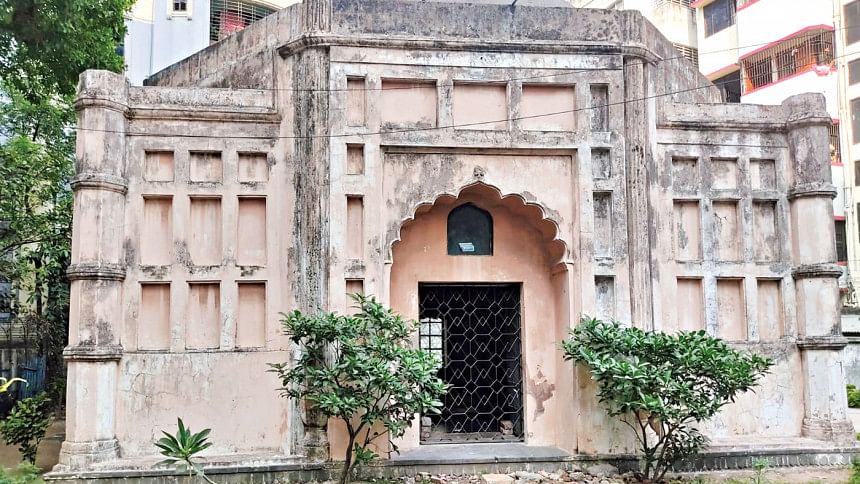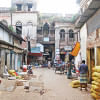The unknown tomb in Mohammadpur

Between Shia Mosque and Mohammadpur Bus Stand, a mausoleum stands at Banshbari, easily visible on the left. On the other side of the road is the historic Sat Gambuj Mosque and today, surrounded by numerous modern buildings, the sepulchre stands out because of its unique design and structure.
"Whose grave is this?" -- I often wonder. With utmost curiosity, I asked several locals this very same question, but no one could provide a clear answer.
From the outside, the structure looks like a Nawab's house. The old building evokes a forgotten past with its style, shape, and use of materials, intriguing people about the story behind it.
Archaeologists and historians suggest that the building belongs to the Mughal era. Buildings of that era have a uniform pattern of structure and character, including large bulbous domes, slender minarets at the corners, massive halls, large vaulted gateways, and delicate ornamentation.
Regarding the mausoleum, Nuruzzaman Sheikh, a resident of Mohammadpur, said, "I see the structure regularly but never thought about whose grave it might be. When the government itself doesn't know, how would I?"
The Department of Archaeology has a signboard that reads: "Unknown Tomb: The tomb appears to be an inseparable part of Sat Gambuj Masjid. According to the legend… one of the daughters of Nawab Shaista Khan was buried in it."
Shaista Khan governed Bengal for 24 years (1664-1688), with a break for a little over one year in 1678-79. His tenure as subahdar was the longest. Of Iranian origin, his family was connected with the Mughal royal family.

As even the Department of Archaeology cannot determine who is buried there, a mystery always shrouds the structure.
Besides, there are two more graves on the tomb premises, but no statement clarifies who they belong to. It is assumed that the graves are of those who took care of the tomb.
On a sunny afternoon, I visited the spot. The gate was open, and the premises were fenced with iron bars, with no one around the structure.
There are four doors on four sides. I got close to one of the doors. Amid the chaotic life outside, an eerie silence existed inside the building. A large grave with a green cloth covering the surface was visible.

In a dimly lit, ancient tomb, several candles flickered, casting eerie shadows on the walls. Amidst the glow, a man seemed to pray.
The air was thick with mystery as if the secrets of the past were silently watching over the scene.
While I was getting out, I looked back. The mysterious tomb of Mohammadpur stood as an enigmatic relic of history -- its silent walls echoing with unanswered questions and forgotten tales from centuries past.

 For all latest news, follow The Daily Star's Google News channel.
For all latest news, follow The Daily Star's Google News channel. 








Comments